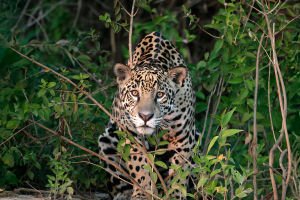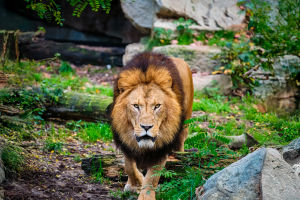Ever watched a herd of zebras grazing and wondered how they survive in the vast, open savannah where predators lurk at every turn? Life on the savannah is a constant test of wits, speed, and endurance.
Every animal here has developed clever ways to stay alive, from avoiding predators to coping with scarce water. Let's explore the fascinating survival strategies that make these animals masters of their environment.
Camouflage and Coloration
Blending in is often the first line of defense. Many savannah animals use their coloring to avoid being seen. Zebras' stripes, for example, may confuse predators when the herd is moving, making it harder to single out an individual. Similarly, young antelopes have spotted coats that mimic the dappled sunlight through tall grasses, helping them stay hidden from lions or cheetahs.
Camouflage is not just about avoiding predators—it can also aid predators themselves. Leopards have patterned fur that lets them sneak up on prey unnoticed.
Speed and Agility
When hiding doesn't work, running fast is the next best strategy. Cheetahs are the fastest land animals, reaching speeds of up to 70 mph in short bursts to catch their prey. Gazelles and impalas rely on agility and unpredictable zig-zag movements to escape predators.
Even large animals like elephants and wildebeests rely on speed and stamina to cover long distances and evade threats. In the savannah, being fast can mean the difference between life and death.
Herding and Group Behavior
Safety often comes in numbers. Many herbivores live in herds, which provides both vigilance and protection. While one animal grazes, others watch for danger. This system allows the group to react quickly if a predator appears. Elephants, for instance, form tight-knit family groups led by a matriarch who guides them to water and food sources, keeping the younger members safe.
Even birds like sociable weavers form large colonies to protect nests from predators. Group living also allows animals to cooperate, defend, and even confuse attackers.
Defensive Adaptations
Some animals carry their own built-in defense tools. Porcupines have sharp quills to deter predators, while rhinos rely on their thick skin and horns. Ostriches use powerful legs capable of delivering strong kicks to fend off threats. Horned antelopes and wildebeests also have horns to protect themselves, and some birds, like the secretary bird, prey on dangerous snakes with careful, calculated strikes. These physical defenses complement behavioral strategies like fleeing or hiding.
<h3Water and Food Conservation
Surviving the savannah is not just about avoiding predators—it's also about handling scarce resources. Many animals have adapted to survive with minimal water. Camels can go days without drinking by storing water efficiently and tolerating dehydration. Some antelopes and reptiles get most of their moisture from plants or morning dew.
Feeding habits are also adapted to the environment: giraffes browse high tree leaves out of reach of competitors, and elephants eat a variety of vegetation to meet their energy needs. Strategic foraging is crucial for survival during dry seasons.
Communication and Warning Systems
Animals often use signals to alert each other to danger. Vervet monkeys, for instance, have specific alarm calls for different predators, allowing the group to respond appropriately. Birds use calls to warn of approaching predators or to signal the presence of food. Even insects, like bees, communicate through vibrations or dances. This network of information sharing enhances survival, making awareness and quick response essential skills in the savannah.
Learning and Memory
Experience counts in the wild. Elephants are famous for remembering water sources over long distances and years. Predators learn hunting techniques, and prey animals learn escape routes. Young animals observe adults and pick up essential survival behaviors. Knowledge accumulated over time ensures that each generation is better equipped to survive the challenges of the savannah.
The savannah is a world of extremes, where every day presents new challenges. Animals survive not just by strength, but through a combination of intelligence, cooperation, and instinct. Watching them adapt, strategize, and thrive offers a window into the remarkable resilience of life. Next time you see a zebra, lion, or elephant, remember: every stripe, horn, and tusk tells a story of survival.
Whether it's a clever escape, a coordinated group defense, or a simple act of foraging at the right time, these strategies highlight the savannah's lessons in persistence, adaptability, and ingenuity. Observing and understanding them can inspire us to approach challenges in our own lives with the same resourcefulness.


